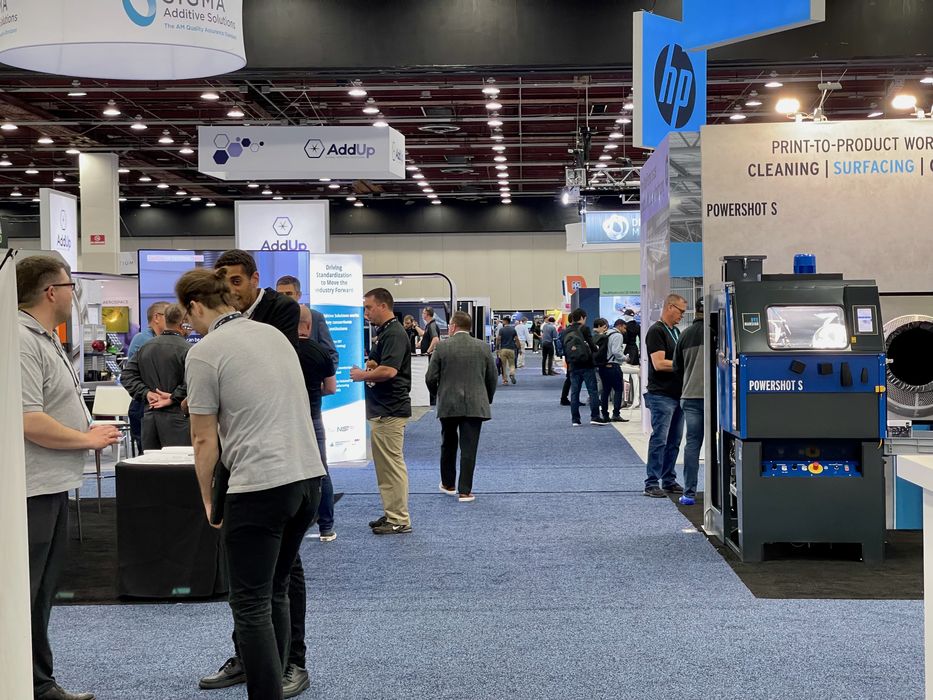
At last week’s Rapid+TCT event there were clearly a number of themes running through the industry.
As this event was our first in-person affair in almost three years, I wasn’t quite sure what to expect. Had things changed a great deal? Or were all 3D print companies coasting through the pandemic? It turns out there were several very distinct themes I saw repeated over and over as we crawled through the enormous exhibition hall in Detroit.
Change and No Change
Given an absence of three years, I thought I would see significant change among the products and services offered by 3D companies. Indeed, this was often the case. As an example, the last time I saw one company they had only basic print samples on display. At this event, however, they showed massive, sophisticated machines that had undergone several revisions. They’re on the move.
However, there were several companies that seemingly had done absolutely nothing during the pandemic and continued to offer essentially the same products and services.
I found this quite curious. Were their efforts to make progress thwarted by pandemic distractions? Some companies took advantage of the slowdown of sales to produce new offerings, which only now are generating sales. It may be that some companies were so deeply damaged by the pandemic their objective was merely to survive, rather than develop new products.
Some of the changes might not be so visible. I saw several companies that made changes, not so much in the technical areas or product offerings, but behind the scenes in their organization. Several shifted from product development mode to commercialization mode, where they will now push forward to sell the products they’ve perfected previously.
Of course, there were some companies not even present at the event, and I do worry about them.
Consolidations and Integrations
Industry consolidations take place all the time, but in the past couple of years it has been quite busy in that dimension in our industry. I suspect the pandemic deeply shook some companies, making them more amenable to takeovers — or acquisitions.
We’ve reported on numerous acquisitions and mergers over the past months, and there’s likely many more to come that we don’t yet know about.
The most important thing, however, is what happens after these corporate moves take place. In some cases the acquired companies continue operating as if they were still independently owned. I know of many large companies in other industries that eventually failed because they didn’t know how to properly consolidate operations from acquisitions. Would that be the case in our industry, too?
In my travels through Rapid+TCT I found repeated examples of integration. This is the phenomenon of combining acquired technologies together to create something even better than the original separate parts. There were several companies strongly leveraging their new tech in unique ways that should be very attractive to new clients.
Niching
Long ago every 3D printer was what I would call “generic”, meaning it was a general purpose device usable by anyone in any industry for any purpose you found valuable. In that mode the 3D printer manufacturers simply made the machine and mostly let clients figure out what to do with them.
Only after many years did specialization occur. We saw printers dedicated to the dental industry, for example. Others for manufacturing, or even for consumers.
But at this event I saw several examples of incredibly narrow specializations, where the manufacturer was focusing on niches so small I couldn’t imagine they would be profitable ventures. At least until they convinced me they were.
For example, I saw a large metal 3D printer specifically and only designed to produce shoe molds. Another vendor had a material to make foam lattices. Still another had an efficient system for 3D printing durable labels on fabric.
These single-application systems seem to be appearing much more frequently these days, and probably that’s a good thing – at least for those with the right application.
Production
Production was a theme of the past, but it’s still going strong. Many exhibitors focused on production aspects: repeatable part quality, high part throughput, automated quality control systems, economic production costs, integration into manufacturing systems, smart post processing systems and use of materials more amenable to manufacturers.
I believe this trend will continue for many years to come.
Bigger
Finally, there were several examples of large scale 3D printing where companies had increased the build volume of their equipment, sometimes to enable dramatically larger part production. This has always been a theme, but the number of machines that can produce furniture-sized parts has never been higher.
That’s the quick fly-past, but in coming weeks we will dig deeper into our findings at Rapid+TCT.

That’s a really good event review article. I wish I could join the conference also. I’m looking for more stories about the Rapid+TCT 2022 in the future!